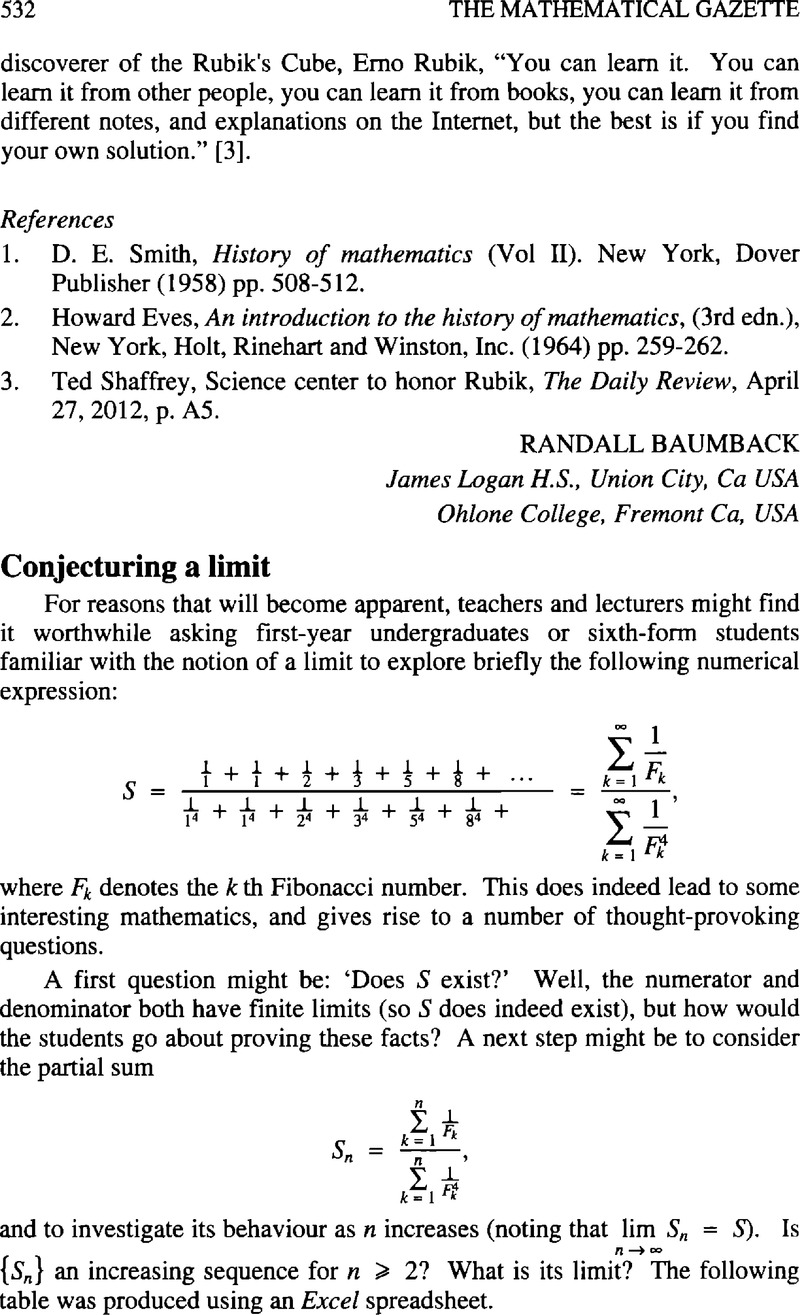No CrossRef data available.
Article contents
Conjecturing a limit
Published online by Cambridge University Press: 23 January 2015
Abstract
An abstract is not available for this content so a preview has been provided. Please use the Get access link above for information on how to access this content.

- Type
- Teaching Notes
- Information
- Copyright
- Copyright © The Mathematical Association 2013
References
2. Wikipedia contributors, ‘Mathematical coincidence’, Wikipedia, The Free Encyclopedia: http://en.wikipedia.org/wikilMathematical_coincidence
Google Scholar
3. Wikipedia contributors, ‘Heegner number’, Wikipedia, The Free Encyclopedia: http://en.wikipedia.org/wiki/Heegner_number
Google Scholar
4. Wikipedia contributors, ‘Reciprocal Fibonacci constant’, Wikipedia, The Free Encyclopedia: http://en.wikipedia.org/wiki/Reciprocal_Fibonacci_constant
Google Scholar
5.
Weisstein, E. W., ‘Reciprocal Fibonacci Constant’ From MathWorld—A Wolfram Web Resource: http://mathworld.wolfram.com/ReciprocalFibonacciConstant.html
Google Scholar


